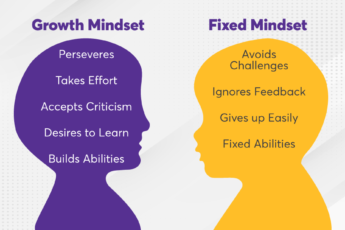Role of Storytelling in Developing English Proficiency
Although English is accepted as a global language, in most Indian schools, English is not the language of instruction. Because of this, students in rural India face difficulty learning it at school. Moreover, using incorrect English remains a problem for students, even in urban areas. While they try their best to grasp the subject, they often fail at sounding correct, mainly when speaking. Moreover, there is a general trend of students losing interest in English by the time they finish class XII because of excessive rote memorization of rules. Storytelling helps develop English proficiency – a basic understanding of how language works, acquire new w ords, phrases, and aptitudes as they build their communication skills.
Importance of storytelling
Throughout history, stories have been a way to pass on traditions and beliefs across generations. From Ramayana, Puranas, Panchatantra, and Jataka tales to Mahabharata, stories from Indian epics have helped children learn the nuances of a language. And since stories have been the most effective way of propagating a linguistic tradition, learning English through stories can help children learn the language in a fun and engaging way.
Telling stories is more than just writing out what happened in chronological order. It requires children to use their imagination and convey emotions through words alone. This helps develop their communication skills, especially when writing essays or giving presentations where they need to convey information interestingly.
Storytelling allows students to express themselves freely by discussing things that interest them or make them happy or sad. It is an effective way to build empathy and understanding between people. With the right encouragement, children can speak out and express themselves clearly. Telling a story in English helps children develop their vocabulary and grammar skills as they use new words while communicating with others through stories and anecdotes.
English Storytelling in Classroom & Home
Stories are full of new words. From character names to locations, from verbs and adjectives to nouns and adverbs — all serving a specific purpose within the narrative. And because there are so many different words in a single story, it provides lots of opportunities for students to practice their reading and listening skills. Thus, stories can be used in many ways in the classroom – read aloud, acted out, dramatized or used as models for writing activities. Educators should consider several factors when selecting stories for the classroom. The stories chosen should appeal to their students, be appropriate for their purpose, and provide opportunities to practice the language.
Here’s how storytelling helps develop English proficiency:
The purpose of storytelling is to enable children to enjoy hearing English in a dynamic and often stylistic way. It is very participatory and immersive, giving the children an awareness of rhythm and structure. In addition, storytelling can be a very effective method for introducing new vocabulary and phrases.
- Accustomed to short bursts of language in the classroom, students are hungry for more stories. As they listen to you include some details about characters or setting or give some background information on context, they become motivated to do the same thing when speaking in English.
- When children tell stories in English, they learn to describe intonation patterns, natural expressions, phrasing, and interactions between indigenous speakers. For older young learners, the activity gives them practice retelling stories or paraphrasing or rewording them.
- The use of stories also allows young learners to link their reading experiences in the classroom to those at home. For example, students have books at home, which can be read with a parent or other family member. In addition, the child can identify household vocabulary, which will ease the understanding of the English language within their household.
- Storytelling is one way that teachers can inspire language learning through discussion and activities. Moreover, parents can help their children at home by reading stories in English, especially ones with interesting characters who do unexpected things or someone who solves a problem.
The following are ways that teachers can use Storytelling helps develop English proficiency:
Use storytelling in conversation class.
Ask your students to share personal experiences or discuss their favorite books, movies, or TV shows. This will help them become more comfortable speaking in English and allow them to use the vocabulary they already know.
Have students tell a story in pairs or small groups.
You can do this as part of a warm-up activity before class starts or after class ends as a way to review everything children have learned during the lesson. This can be especially helpful if you teach elementary school students who often struggle to speak in front of others!
Tell stories that involve your students.
This allows students to see how the story is told, which helps them understand the context of the sentences and phrases. You can also ask them questions about the story after reading or listening together so they can think about their answers before speaking out loud.
The Bottom Line
Adding storytelling tactics to a teacher’s established array of teaching skills can boost student engagement and retention of their material. Square Panda India’s programs focus on the art and strategy of using exciting stories to help students understand new concepts at a deeper level. Our programs give teachers a solid foundation in delivering joyful education that engages and connects with students and inspiring change that impacts communities. To know more, visit ecce.squarepanda.in




Leave a Comment